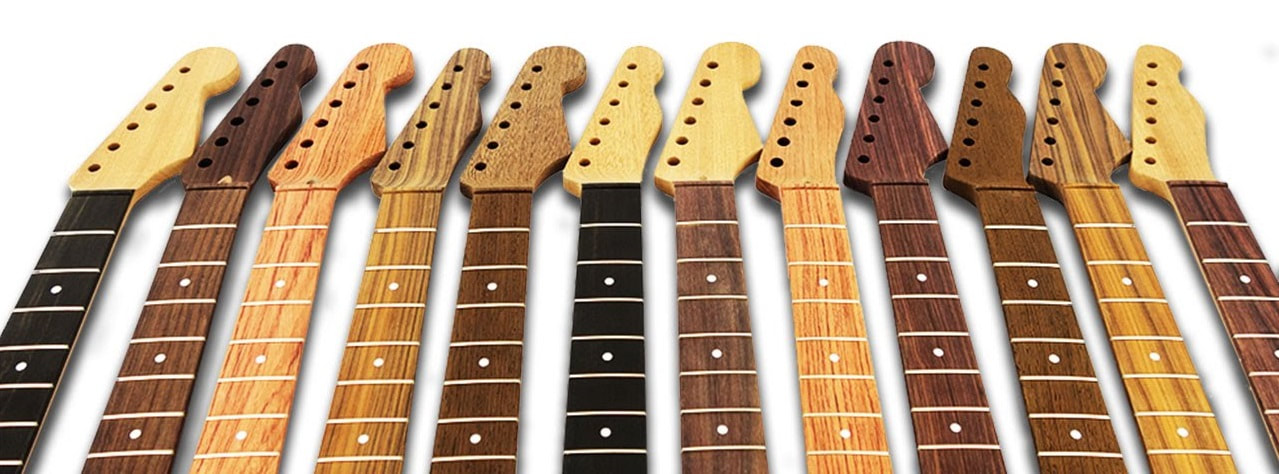|
There are several advantages for a beginner to playing the guitar/bass with a strap.
First off, you'll need to get the right strap for you and your instrument. Depending on the weight of your instrument, I recommend a light, medium or heavy leather strap which will usually run between $15 - 60 depending on quality, thickness and width. If you have a really heavy bass, I strongly recommend not only a thicker strap but more importantly, a wider strap. I suggest getting a leather strap because they tend to be more comfortable on your skin. The length of the strap is another consideration. Many "cool" musicians like Slash or virtually every punk musician wear their instruments very low, which is fine, once you are good! But as a beginner or intermediate player, or if you play a lot of technically challenging music especially with difficult stretches, you'll want to have your instrument higher, around the bottom of your chest. A strap can be helpful even if you're sitting because if it's properly adjusted you'll be freed up in that you won't have to hold/brace your instrument, the strap has that covered. To become a proficient player, you'll have to learn to play by feel more so than by sight (over time) and playing with a strap will keep your instrument upright which in turn will force you to play more by feel. Lastly, I always advise that you practice much of the time standing up. Standing is good for multiple reasons: It really helps you to play by feel, it allows you to move around more freely and standing tends to make you more alert and engaged.  There are many aspects of playing the guitar or bass that are very fundamental and yet are not commonly understood by many, if not most beginners (and some intermediate players). One such concept is the idea of bisecting the neck of the guitar into two equal halves: the three bass strings (E, A and D) and the three melody string (G, B and E). It's useful to think of the three bass strings as a representation of the left hand of a piano player and the three melody strings as the right hand of a piano player. The guitar has a capacity that is similar to the piano in that complex arrangements of songs are possible on both instruments that have bass, middle and melody motion and sound like there are two (or even three) players, playing at once. General orientation in terms of pitch, what constitutes high or low, can be surprisingly confusing on instruments with necks. For example, going "lower" has multiple manifestations: going from string one to two to three etc. is going lower while going from fret eight to fret two on the same string is also going lower. The reverse is also true in terms of going higher: going from string six to five to four etc. is moving higher and going from fret two to fret eight is going higher. As your playing progresses, this concept - of bass and melody strings with become increasingly salient. Are you ready for your first lesson? Get in touch.  Bach about to rock out Bach about to rock out When you're a beginner, well through intermediate player, one of the most frustrating aspects of learning is the sense that the fretboard and the logic and patterns of music seem so mysterious and you just can't see how all the pieces fit together. I've found that one of the most helpful ways to deal with that confusion and overwhelm is to do what I call “thinking intervallically”. Intervals are the space between pitches – I suggest you work at analyzing scales, chords, melodies, arpeggios, really everything with an intervallic analysis. This approach is commonly employed by many of the best musicians. After some time of doing this, the fog will begin to lift and suddenly, the dots will start connecting. Here are some examples of what I'm talking about: A Cm9 chord is built of a root, min3rd, 5th, flat 7th and 9th ( C - E flat – G – B flat – D ) = that is an intervallic analysis. A minor blues scale is a root, flat 3rd, 4ths, flat 5th, 5th and flat 7th. A Dorian scale is: root, 2nd, flat 3rd, 4th, 5th, 6th and flat 7th. Another way of using the approach of thinking intervallically is in relation to chords, for example, take one of the most rudimentary chords, an open C major chord. (third finger on the fifth string, 3rd fret, second finger on the fourth string, 2nd fret, third string open, first finger on the second string, 1st fret and first string open) the intervals from low to high are: root, 3rd, 5th, root, 3rd. You should analyze every chord you play this way, it will do wonders for your understanding. It requires a good bit of discipline but I recommend you build up to eventually ALWAYS know all the intervals in EVERY scale, chord, etc – it's absolutely worth the effort! Parallel keys and scales are keys and scales that share the same root. Understanding this concept is very useful to songwriters and for improvisation.
Many prominent songwriters employ parallel keys and/or parallel scales in their songs. The Beatles frequently used this device, in “While My Guitar Gently Weeps”, the verse is in the key of A minor and the bridge is in the key of A major. In “Penny Lane”, the verse is in B major and the bridge is in B major. Finally in “Norwegian Wood”, the verse is in D major and the bridge is in D minor. You can also use parallel scales to great effect. An example I frequently teach students I,s parallel scales you can you to solo over a traditional dominant blues 12 bar progression. If, for example you're playing blues in the key of G, parallel scale options would be the G minor blues scale, G major blues scale, G mixolydian scale or G dorian scale. Those different scales offer a massive amount of varitey, especially if compounded (mixed together) creatively. Lastly, another interesting trick you can use is to end a song on the parallel I chord of the key. So, if the song is in the key of A major you can end on some form of an A minor chord and if the song is in A minor, you can end on some form of A major. |
AuthorEric Hankinson Archives
December 2023
Categories
All
|
|
The Chromatic Watch Company
(my other business) |
|

 RSS Feed
RSS Feed

